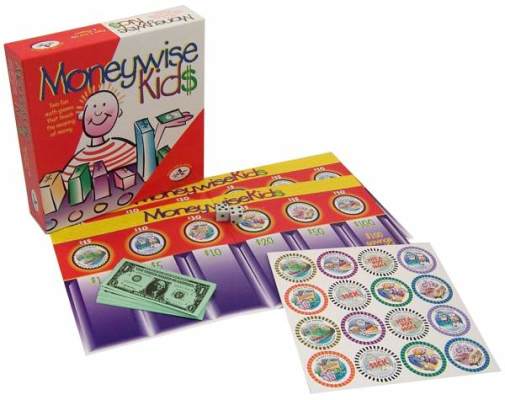We use cookies to make your experience better. To comply with the new e-Privacy directive, we need to ask for your consent to set the cookies. Learn more.
Moneywise Kids
- Small parts. Not for children under 3 years.
Painlessly teach your child the meaning of money with these two easy games. Vital mathematical concepts such as: addition, subtraction, multiplication, place value, making change, budgeting, and money management are taught and practiced. Both games ("Bill Maker" and "Bill Breaker") are fun and fast-paced, with two players competing. In "Bill Maker" your goal is to be the first player to accumulate one $100 bill. Play money is included in 1's, 5's, 10's, 20's, 50's, and 100's. Players are constantly exchanging smaller bills for larger ones until that winning $100 is obtained.
"Bill Breaker" deals more with real life and is slightly more advanced. A parents' pay check may seem like big bucks to a small child, but where does it all go? This game uses moneywise kids markers representing some of the costly expenses and necessities of life (not realistically priced, of course!) such as taxes, clothing, food, medical care, transportation, and housing. Players constantly take the risk of picking up a financial explosion that will really blow a hole in their savings. The first player with all six markers and $100 wins. - Megan
| Product Format: | Game |
|---|---|
| Brand: | Aristoplay |
| Grades: | 2-AD |
| ISBN: | 9781570578083 |
| EAN/UPC: | 720233008085 |
| Length in Inches: | 8.5 |
| Width in Inches: | 8.5 |
| Height in Inches: | 2 |
| Weight in Pounds: | 0.8 |

